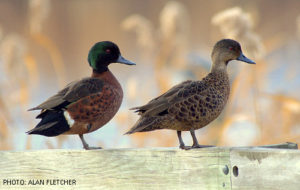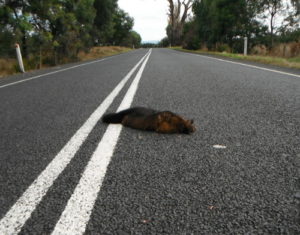[vc_row][vc_column width=”1/1″][vc_column_text]
Wildlife
[/vc_column_text][/vc_column][/vc_row]
[vc_row type=”full_width_background” bg_position=”left top” bg_repeat=”no-repeat” parallax_bg_speed=”slow” bg_color=”#e8ede8″ scene_position=”center” text_color=”dark” text_align=”left” top_padding=”10″ bottom_padding=”10″]
[vc_column width=”2/3″][vc_column_text]
Killing Seasons
Many native wildlife species are subject to annual ‘recreational’ killing seasons including five species of ducks, brown quail and short-tailed shearwaters. This annual blood-shed is legitimised as ‘recreation’ in Tasmania and other states. Often shooters justify this killing as being necessary for ‘wildlife management’. This justification uses the arrogant concept that humans should dictate to other species how many of them are allowed to exist based on how they impact on human endeavours and how much enjoyment humans get out of killing them. Humans need to respect wildlife and learn non-violent ways to live with them.
[/vc_column_text][/vc_column]
[vc_column width=”1/3″ animation=”none” column_padding=”no-extra-padding” column_padding_position=”all” background_color_opacity=”1″ background_hover_color_opacity=”1″]

[/vc_column][/vc_row]
[vc_row type=”full_width_background” bg_position=”left top” bg_repeat=”no-repeat” parallax_bg_speed=”slow” bg_color=”#ffffff” scene_position=”center” text_color=”dark” text_align=”left” top_padding=”10″ bottom_padding=”10″]
[vc_column width=”1/3″ animation=”none” column_padding=”no-extra-padding” column_padding_position=”all” background_color_opacity=”1″ background_hover_color_opacity=”1″]

[/vc_column]
[vc_column width=”2/3″][vc_column_text]
“Culling” and “Management”
Non-human animals are killed in large numbers because they are seen to interfere with human activities. For example wallabies and possums are shot and poisoned in their hundreds of thousands because they are seen to conflict with agriculture and forestry. Often the only reason that they interfere at all is because humans have destroyed their natural habitats and replaced them with the very industries that they are being killed to protect. Just recently humans killed over 700 koalas in South Australia, even though they are disappearing and becoming endangered all throughout the rest of Australia because they were ‘starving’ due to habitat destruction. When challenged with the question as to why they weren’t relocated the answer was ‘that they wouldn’t cope well with being relocated’. Unfortunately the koalas didn’t cope well with being killed either.
[/vc_column_text][/vc_column][/vc_row]
[vc_row type=”full_width_background” bg_position=”left top” bg_repeat=”no-repeat” parallax_bg_speed=”slow” bg_color=”#e8ede8″ scene_position=”center” text_color=”dark” text_align=”left” top_padding=”10″ bottom_padding=”10″]
[vc_column width=”2/3″][vc_column_text]
Wildlife and Roads
Vehicle collisions with native wildlife is a serious problem in Tasmania. The official estimate is that 500,000 native species are killed each year on Tasmanian roads – unofficial estimates are double this number. The tragedy of the situation is made worse by the realisation that many deaths are avoidable. Simply driving at a safe speed between dusk and dawn and being vigilant for wildlife crossing, or sitting on, the road, can save many lives. Often this means a significant change in speed (travelling at 60 km/h instead of 100 km/h) but the difference can be life saving. Avoiding travelling when it’s dark is another way to avoid collisions. And tell your family and friends to do the same.
[/vc_column_text][/vc_column]
[vc_column width=”1/3″ animation=”none” column_padding=”no-extra-padding” column_padding_position=”all” background_color_opacity=”1″ background_hover_color_opacity=”1″]
[/vc_column][/vc_row]
[vc_row][vc_column width=”1/1″][vc_column_text]
Wildlife Matters
We all share this planet and we all have a responsibility to live harmoniously with its inhabitants. There are many situations where humans and native wildlife come into contact. This can be an enjoyable and rewarding experience if we have a respectful and understanding attitude. Many people delight in watching the many bird species that visible by day, and many also take pleasure in observing the many mammals who choose to come out only at night.
There are many who need to learn to live in co-operation with the native creatures, instead of seeing them as the enemy. It merely takes a little times to learn more about the many fascinating individuals and their unique ways. Take some time to immerse yourself in nature and observe those who share the environs.
For more info go to: www.wildlifematters.org.au

